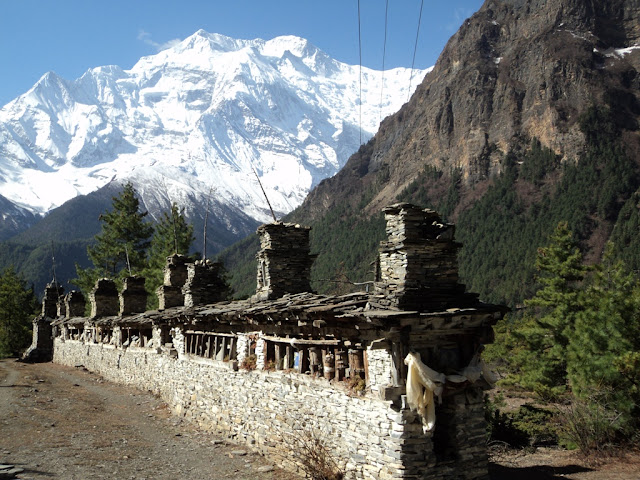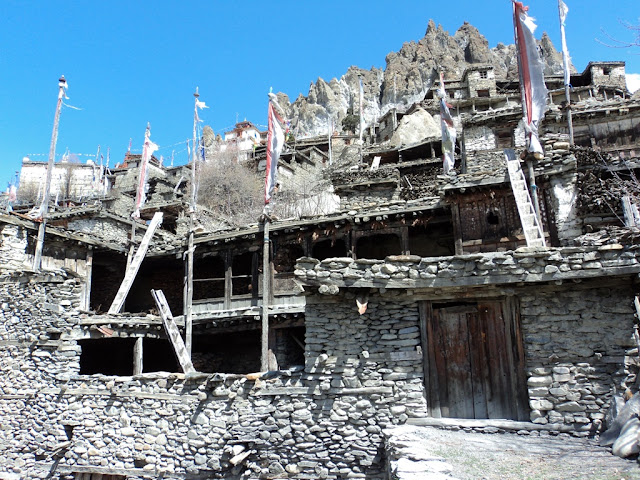Manang awe inspiring natural beauty and rich cultural heritage make this a truly an unforgettable part of the world. Manang district is one of the remotest district of Nepal, and covering an area of 1914 km2, is about a third of ACA area of responsibility. The 5000 residents are physical defined by three regions.
1. Nyesang – which extends Pisang to Khangsar
2. Gyalsomdo – Which extends Tal to Chame
3. Naar Phoo Valley – North part of Manang, which is just opened for foreigners.
1. Nesyang – The upper valley of Manang district, known locally as Nyesang, extends 20 km from Pisang (3200m)to Khangsar (3730m) and lies at an average elevation of 3500m. The inhabitants known as Nyesangpa or more popularly Manangi are said to have migrated from Tengur in Tibet and have settled the area for some hundreds of years. The population of Nyesang also includes Ghale, Gurung and immigrant Tibetan people, although the culture and traditions of the area are strongly motivated by Lamaist Buddhist practices, evidenced by the streaming prayerflags and mani wlls as well as the many Gompa of the area (the oldest of which predate the 14th century). Traditionally the people of the region have been great traders, a fact certified by royal warrant in 1984 during the region of Gorkha Kings. Since that time Manang people have been involved in trading herbs, animal product and other local commodities on the national and international stage. With the decline in urban opportunity and local development of the tourism industry, many Manangi families have moved their enterprises back to Nyesang with particular in hotels, restaurants and shops catering to the tourist trade. Although tourism has become increasingly important to the prosperity of the region, agriculture remains the basic of the local economy and way of life. Barley, Wheat, Buckwheat and Potato are the main crops, which are harvested once a year (march-November). The Nyesang valley also forms important pasture land for grazing yaks, cows, goats, sheep and horse.
2. Gyalsomdo : Gyalsomdo is the southernmost region of Manang district, extending from tal to Chame, situated in Marshyandi gorge. The people of the region are mostly Gurung, followers of pre- Buddhist Bonpo religious tradition. However, Ghale, Lama, Gurung, Ghotiya, kami and immigrant Tibetan people have made home in Gyalsomdo. In the past, Gyalsomdo was an important center for the salt trade crossing Larke pass. Today, the local economy is dependent on agriculture, livestock, wage labor and tourism.
3. Nar –Phoo: The Nar –Phoo region is the northernmost area of Manang district bordering China (Tibet) and comprising the very important in this physical isolated region, and like the Nyesang the people of Nar –Phoo are strong adherents to Lamaist Buddhist.







nice post,
ReplyDeletevisit this blog about Limbuwan :
https://limbuwankingdom.blogspot.com
Thank you.
ReplyDelete